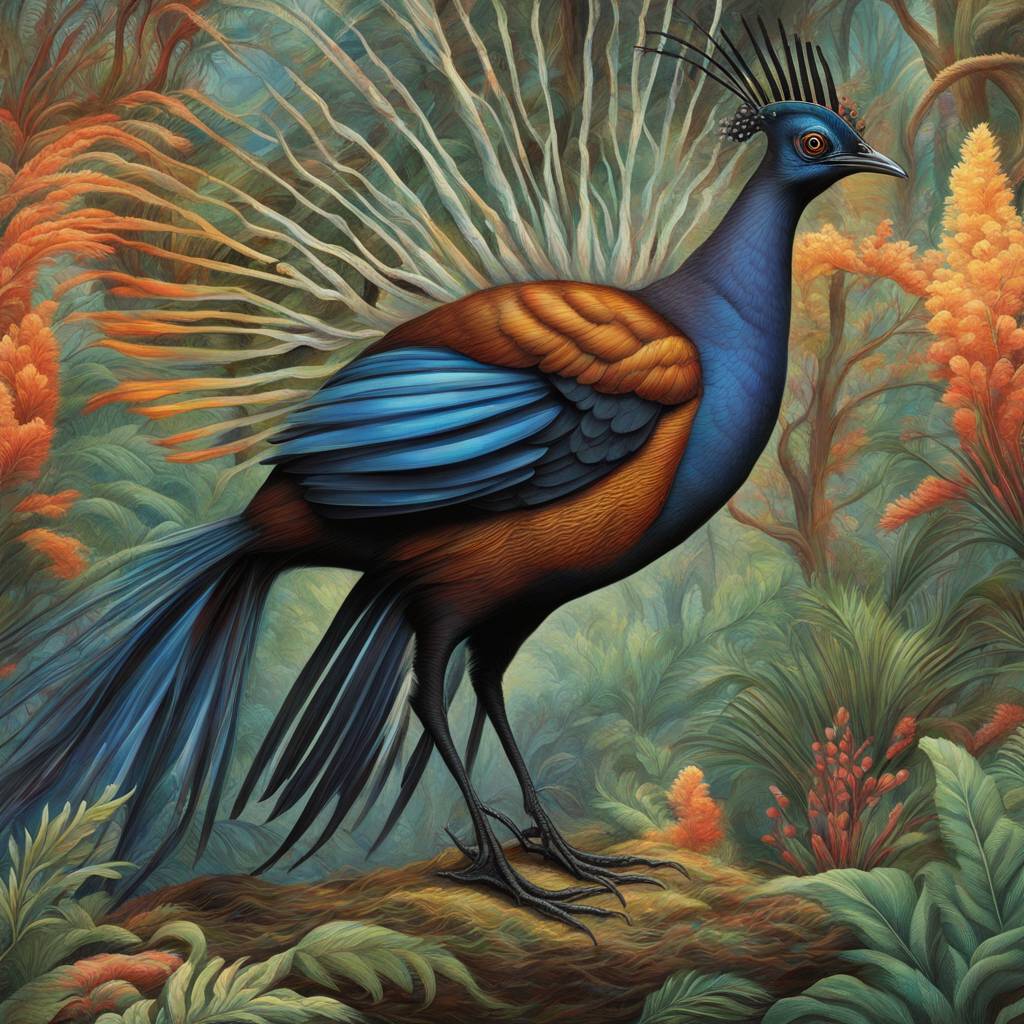Albert’s Lyrebirds in Australia engage in intricate courtship displays to attract a mate, using thorny vines as a stage for their performances. These birds grip the vines with their feet and synchronize their movements with their striking songs, creating a choreographed dance that includes both loud gronking and rhythmic gronking songs. Researchers observed this behavior in five populations of Albert’s Lyrebirds during the breeding seasons from May 2018 to August 2019. The birds’ tail-flipping and vine-shaking behaviors were consistent across all individuals and populations, suggesting that it is a species-wide trait.
The vine-shaking behavior may serve multiple purposes, such as enhancing the male’s display to make him appear bigger and more vigorous, or creating the illusion of nearby predators to encourage a female to stay close for safety. While the researchers did not observe any female birds during their study, they hope to collect more footage in the future to understand how the presence of female birds may influence the males’ performances. Despite potential variations in the structures used by the birds for their courtship displays, the overall behavior of gripping the stage with their feet and moving up and down remains consistent.
This research was a collaboration between scientists from the Cornell Lab of Ornithology and Western Sydney University. Lead author Fiona Backhouse, a postdoctoral researcher with the Cornell Lab of Ornithology, described the lyrebird’s courtship display as a carefully orchestrated dance involving the manipulation of the surrounding vegetation. The researchers used remote cameras to capture the behavior of the lyrebirds in their natural habitat, which consists of fragmented rainforest habitats in a small mountainous region in Australia.
The Albert’s Lyrebirds’ courtship display involves not only vocalizations but also physical movements that manipulate their stage, whether it be vines or sticks, as part of their performance. This behavior demonstrates the birds’ ability to create an impressive spectacle for potential mates, showcasing their strength and agility through synchronized footwork and song. By studying this behavior in the wild, researchers hope to gain insight into the evolutionary significance of these elaborate courtship displays and how they may influence mate choice and reproductive success in this species.
Overall, the research highlights the complex and fascinating courtship behaviors of Albert’s Lyrebirds, shedding light on the evolutionary mechanisms behind these displays. The consistent nature of the vine-shaking behavior across populations suggests that it is a species-wide trait that may play a significant role in mate attraction and reproductive success. Further studies involving female observers may provide additional insights into how these behaviors are perceived and their impact on mate choice in the wild. Ultimately, understanding the courtship rituals of these birds offers a glimpse into the diverse and intricate ways in which animals communicate and compete for mates in their natural environments.













